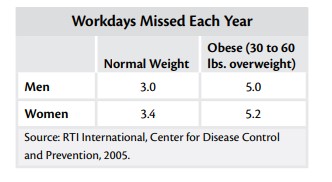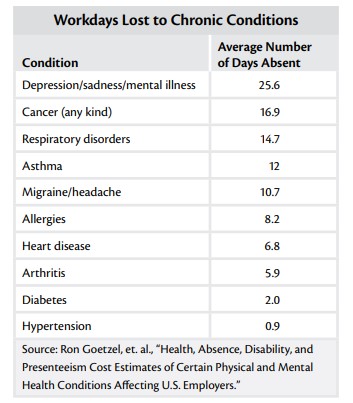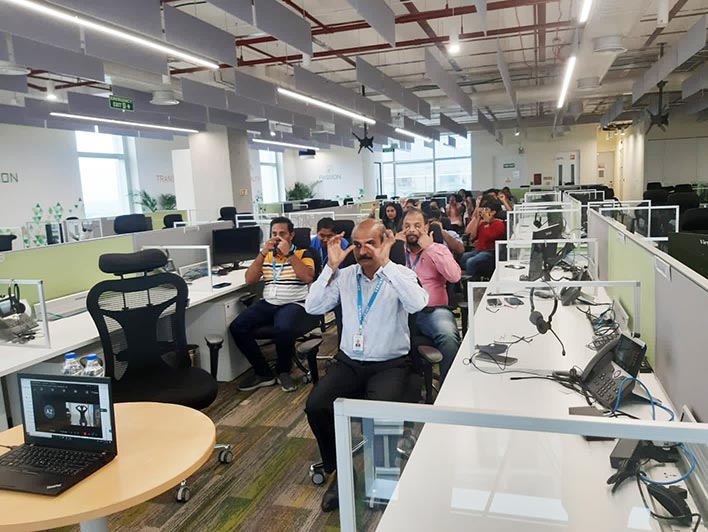
You have a lot on your plate as a HR manager or owner of a small business. Maintaining high earnings and low costs is challenging, particularly when so many variables, such as customer demand, are out of your preferences, the local or national economy, employee cutbacks, decreased production as a result of illness or medical issues, and growing costs of advantages of health insurance.
But hold on, are there any steps you may do to reduce those final two expenses? Many businesses are realizing that by aggressively encouraging employee wellness, they can increase worker output and maintain their health constant costs for insurance, with a net profit on every dollar spent spend.
You don’t have to be a large firm with an inhouse own gym, delicious salads in the staff lunchroom, and an on-site employee clinic with nurses, acupuncturists, and massage therapists to enjoy these benefits. Comprehensive initiatives like these do grab the media coverage. But your company, regardless of its size, may implement health-related improvements that have a big impact.
What Do Health Concerns Cost Your Business?
Your company’s profit line is affected by your employees’ health in two significant ways:
- Your firm may be losing productivity as a result of employee health issues
- You’re undoubtedly paying to give health insurance benefits to your employees
We’ll concentrate on each of these in turn.
The Increasing Costs Of Health insurance
Over 60% of Indian workers who are under retirement age have health care through their employers, according to a recent count. These firms are the backbone of the Indian healthcare system, even though there is no legislation requiring them to do so and corporations are increasingly passing some of the expenses to employees. Furthermore, for many individuals, having access to health insurance is a top priority when looking for work.
However, if you offer health insurance, you are aware of its high cost. The average yearly cost of a U.S. health insurance premium per employee increased from $4,336 to $8,331 between 2001 and 2008. Early 2009 figures showed an increase to $8,863 per employee. Additional price hikes are expected, and you might already be paying more. In India one can cite almost similar figures!
CEOs identified the expense of health care as the single biggest threat to their companies’ revenues in a 2007 Business Roundtable survey. Therefore, it makes sense that nearly half of all small businesses have determined they cannot offer health insurance.
Why do these expenses keep rising? While the rising expense of healthcare is a contributing factor, your own employees’ usage patterns and health status may also play a role. To put it another way, when your company’s health insurance policies are up for renewal, the insurer might assess the cost of insuring each employee and then change the overall rates to reflect that. (Despite being prohibited by law from doing so, insurers are nonetheless permitted to consider individual health considerations when determining an aggregate premium for all employees.)
For instance, if Rajesh suffered a heart attack last year and Garima developed diabetes as a result of her burger, fries and cola consumption, these two factors might be enough to raise your prices in a small company. The most likely reasons, which account for nearly 75% of U.S. health care expenses, are chronic diseases like multiple sclerosis, cancer, diabetes, arthritis, allergies, and kidney disease.
The cost of your workers’ compensation insurance may also depend on the health of your employees. The base premium rate is normally set by state regulators, but insurers may change it depending on your workplace‘s claims history, or what’s known as an “experience modifier.” At renewal time, you’ll probably have to pay more if your employees file more claims each year. And while some workplace injuries are accidental, many of them are related to underlying medical conditions. For instance, Nikita’s alcoholism may be to blame for her accident with the machinery, while Amit’s poor posture and lack of physical fitness may be to blame for his carpal tunnel disease.
Even the cost of your life insurance benefits may vary depending on how well your employees are doing. Your employees might need to have a health exam as a requirement for coverage, depending on your insurer and the extent of your coverage. However, you’ll more frequently provide a straightforward group life insurance plan where premiums are determined without consideration for specific medical conditions. However, larger businesses—those with 1,000 or more employees—might have an additional challenge. Even with a group life policy, an exceptionally high claim frequency from one workplace may result in higher rates.

Absences And Lost Productivity: Behind The Scenes Costs
Every person is essential and needs to be operating at their highest level of productivity during difficult economic circumstances, when you may have already reduced your staffing to the bare minimum. Both absenteeism and presenteeism, which is turning up to work while feeling ill, stressed out, or otherwise disengaged, can have a negative impact on your revenue. Additionally, it might harm your reputation with clients, such as when a manager or head chef isn’t present or a grumpy and congested cashier or receptionist.
Your employees may also be aging, particularly because a large number of baby boomers who had planned to retire soon are finding that they can no longer afford to do so since their investment portfolios have been severely damaged or destroyed. You can have workers who continue to work into their 70s. While major medical issues aren’t always associated with advanced age, screening and preventive care become increasingly important. The future may not seem good for people who have spent their entire lives ignoring their bodies’ requirements for diet, activity, and health.
Absenteeism: The typical employee misses five days of work a year due to health issues. And there is no such thing as the “average” person.
While some of your employees may rarely use sick days, others will likely be out for a longer period of time—often much longer if they have serious or long-lasting diseases.
Who Uses Sick Leave the Most?
- In general, young, unskilled workers use sick leave the most.
- Compared to males, women take more sick days.
- Older workers take more sick days than middle-aged workers do.
- People with drinking issues are more likely to be out on Mondays and Fridays.
- People with minor health issues are more likely to be out on chilly, rainy days.
*Source: “Planning Wellness; Getting Off to a Good Start,” Absolute Advantage; The Workplace Wellness Magazine, Volume 5, Number 6
More than you may be aware, absenteeism can negatively impact your company’s profitability. It’s not just about the short-term loss of the value of a worker’s activity. Depending on your industry, you can lose money that cannot be made up, such as if you have to turn away walk-ins or occasional customers while you’re away. The ensuing delay can also prevent team members from moving forward with a bigger project, or you might have to pay a replacement worker who doesn’t work as well. If two of your eight employees are absent due to illness, it amounts to 25% of your staff, which has a more significant effect on smaller businesses. In fact, according to one study, the average cost of an absence to the business is 28% more than the worker’s actual wage.

Presenteeism. What about the workers who are consistently present at work? Do they truly give it their all, or are some just having a hard time because of a mental or physical ailment? (These issues may range from the common cold to stress over a sick kid or spouse to long-term depression.) Three out of 10 working persons admit, according to studies, that health issues reduce their productivity at work. In a bad economy, when people worry that if they don’t show up every day, they would be among the first people laid off, the issue tends to get worse.
We all know how, on a good day, we may feel sharp, quick, creative, or responsive, whereas, on a bad day, we may feel like we’re moving through a minefield, grumpily waiting for the day to end. It can be difficult to quantify the exact productivity difference caused by working while feeling under the weather. It is clear that employees who experience more excellent days will be able to do more and make fewer errors.
According to the results of numerous studies, businesses would benefit greatly if sick employees just stayed at home. One reason is that coming to work sick often backfires since those who do so ultimately take more sick days than other employees.
Employees who stayed home with their illnesses showed a 28 percent reduction in productivity, compared to a 72 percent reduction when they attempted to push through the illness and continue working. Additionally, between 20 and 60 percent of all health-related expenses incurred by businesses can be attributed to lost productivity at work, says industry analyst Ron Goetzel.
Of course, the precise figures vary depending on the type of business you run and the standards you have for your employees. But working while ill has negative repercussions on many different kinds of jobs. Cashiers need to maintain patience and friendliness, managers need to be able to think clearly, data entry employees need to be vigilant, air traffic controllers need to be strong, and bus drivers need to be coordinated. Illness or poor health may have an impact on any of these.
Do productivity losses always occur? In some ways, employee illness is just a necessary evil of doing business. Getting sick is, in some respects, a normal part of life due to genetics, bad luck, and the rare flu bug so potent that not even the vaccine inventors foresaw it. Though not always. Personal lifestyle and behavior decisions have a stunning impact on Americans’ health, especially when it comes to chronic illnesses. According to estimates, chronic diseases account for 70% of all fatalities in the United States and can be connected to unhealthy eating habits, inactivity, smoking, and untreated mental illness.
Let’s take a look at the effects that being overweight has on American workers, as displayed in the table below, as an example. Remember that about one-third of Americans are considered to be obese rather than just overweight. Further weight gain is also on the rise:
In 2000, obesity rates in 28 U.S. states were below 20%; by 2007, they had risen to 20% or higher in 49 of the 50 U.S. states.
Employers will incur a total annual cost of $45 billion as a result.

Not all issues with weight might result in ill health and lost workdays. Many of the chronic illnesses that keep people from working are included in the table below; with the correct preventive, early diagnosis, or behavioral modifications, they can all be avoided, treated, or at least have their severity lessened.
Weight isn’t the only problem that leads to poor health and missed workdays. The table below shows many of the chronic conditions that cause people to miss work—all of which can be either reduced in severity, cured, or forestalled with the right prevention, early diagnosis, or behavioral changes.

The Bottom line
Clearly, there’s a lot to be gained in India by learning from the missteps in developed and industrialised countries. You can prevent absenteeism and improve productivity by having a healthy workforce. It is essential to the overall profitability of your business. The best method to start focusing on employee health and fostering healthy lifestyle habits is to introduce wellness programs to your staff. Employees who participate in wellness initiatives tend to be healthier and happier.
Office Yoga & Meditation @ Verint Bangalore
Below is a company that has taken wellness to heart. Verint’s Bangalore and Delhi offices have started office yoga & meditation sessions for all their employees by hiring corporate wellness instructors from Wellintra Fitness. Watch our trainer Shraddha Bantia conducting a pranayama and meditation session at Verint’s Bangalore office! Take a leaf out of Verint’s employee wellness playbook and give us a call to let us help you initiate similar employee wellness activities at your own company! Pick up the phone and call us today!
Do not miss a single article!
Submit your email id to get new articles directly into your email inbox!
- Why You Should Learn Pilates - August 27, 2022
- All You Need to Know about HIIT Workouts - August 23, 2022
- Hallmarks of A Good Fitness Trainer - August 20, 2022










Add Review